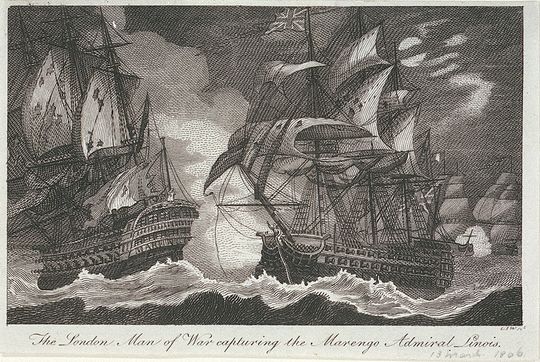|
French Ship Marengo
Six ships of the French Navy have borne the name ''Marengo'' in honour of the Battle of Marengo: * ''Marengo'' (ex-''Sceptre''), a 74-gun ship of the line * ''Marengo'' (1802) (ex-''Jean-Jacques Rousseau''), a 74-gun ship of the line * ''Marengo'', a 120-gun ship of the line started in 1807 as ''Marengo'', and launched in 1851 as ''Ville de Paris'' * , a 74-gun ship of the line * , a small craft * (1872), an armoured frigate A frigate () is a type of warship. In different eras, the roles and capabilities of ships classified as frigates have varied somewhat. The name frigate in the 17th to early 18th centuries was given to any full-rigged ship built for speed and ... Sources and references * {{DEFAULTSORT:Marengo French Navy ship names ... [...More Info...] [...Related Items...] OR: [Wikipedia] [Google] [Baidu] |
French Navy
The French Navy (french: Marine nationale, lit=National Navy), informally , is the maritime arm of the French Armed Forces and one of the five military service branches of France. It is among the largest and most powerful naval forces in the world, ranking seventh in combined fleet tonnage and fifth in number of naval vessels. The French Navy is one of eight naval forces currently operating fixed-wing aircraft carriers,Along with the U.S., U.K., China, Russia, Italy, India and Spain with its flagship being the only nuclear-powered aircraft carrier outside the United States Navy, and one of two non-American vessels to use catapults to launch aircraft. Founded in the 17th century, the French Navy is one of the oldest navies still in continual service, with precursors dating back to the Middle Ages. It has taken part in key events in French history, including the Napoleonic Wars and both world wars, and played a critical role in establishing and securing the French colonial ... [...More Info...] [...Related Items...] OR: [Wikipedia] [Google] [Baidu] |
Battle Of Marengo
The Battle of Marengo was fought on 14 June 1800 between French forces under the First Consul Napoleon Bonaparte and Austrian forces near the city of Alessandria, in Piedmont, Italy. Near the end of the day, the French overcame General Michael von Melas's surprise attack, drove the Austrians out of Italy and consolidated Bonaparte's political position in Paris as First Consul of France in the wake of his coup d'état the previous November. Surprised by the Austrian advance toward Genoa in mid-April 1800, Bonaparte hastily led his army over the Alps in mid-May and reached Milan on 2 June. After cutting Melas's line of communications by crossing the River Po and defeating ''Feldmarschallleutnant'' (FML) Peter Karl Ott von Bátorkéz at Montebello on 9 June, the French closed in on the Austrian Army, which had massed in Alessandria. Deceived by a local double agent, Bonaparte dispatched large forces to the north and the south, but the Austrians launched a surprise attack o ... [...More Info...] [...Related Items...] OR: [Wikipedia] [Google] [Baidu] |
French Ship Sceptre (1780)
''Sceptre'' was a 74-gun ship of the line of the French Navy. Built under the Ancien Régime, she took part in the naval operations in the American Revolutionary War. At the Revolution, she took part in the main actions of the French Revolutionary Wars, notably the so-called Glorious First of June and in Bruix' expedition of 1799. Showing her age by the rise of the First French Empire, she was hulked and eventually broken up. Career In 1781 and 1782, she took part in the naval operations in the American Revolutionary War, under Admiral de Grasse. She fought at the Battle of the Chesapeake and faced HMS Formidable on 12 April 1782 at the Battle of the SaintesFamous Fighters of the Fleet, Edward Fraser, 1904, p.119 under Louis de Rigaud de Vaudreuil. In August, ''Sceptre'', ''Astrée'' and , under La Pérouse, raided several English fur trading posts during the Hudson Bay Expedition, including Fort Prince of Wales. In 1783, she was decommissioned in Brest. On 29 Septem ... [...More Info...] [...Related Items...] OR: [Wikipedia] [Google] [Baidu] |
74-gun
The "seventy-four" was a type of two- decked sailing ship of the line, which nominally carried 74 guns. It was developed by the French navy in the 1740s, replacing earlier classes of 60- and 62-gun ships, as a larger complement to the recently-developed 64-gun ships. Impressed with the performance of several captured French seventy-fours, the British Royal Navy quickly adopted similar designs, classing them as third rates. The type then spread to the Spanish, Dutch, Danish and Russian navies. The design was considered a good balance between firepower and sailing qualities. Hundreds of seventy-fours were constructed, becoming the dominant form of ship-of-the-line. They remained the mainstay of most major fleets into the early 19th century. From the 1820s, they began to be replaced by larger two-decked ships mounting more guns. However some seventy-fours remained in service until the late 19th century, when they were finally supplanted by ironclads. Standardising on a common ship s ... [...More Info...] [...Related Items...] OR: [Wikipedia] [Google] [Baidu] |
Ship Of The Line
A ship of the line was a type of naval warship constructed during the Age of Sail from the 17th century to the mid-19th century. The ship of the line was designed for the naval tactic known as the line of battle, which depended on the two columns of opposing warships maneuvering to volley fire with the cannons along their broadsides. In conflicts where opposing ships were both able to fire from their broadsides, the opponent with more cannons firingand therefore more firepowertypically had an advantage. Since these engagements were almost invariably won by the heaviest ships carrying more of the most powerful guns, the natural progression was to build sailing vessels that were the largest and most powerful of their time. From the end of the 1840s, the introduction of steam power brought less dependence on the wind in battle and led to the construction of screw-driven wooden-hulled ships of the line; a number of purely sail-powered ships were converted to this propulsion mech ... [...More Info...] [...Related Items...] OR: [Wikipedia] [Google] [Baidu] |
French Ship Jean-Jacques Rousseau (1795)
''Jean-Jacques Rousseau'' was a 74-gun ship of the line of the French Navy, active during the French Directory, French Consulate and First French Empire. Renamed ''Marengo'' in 1802, she took part in Linois' operations in the Indian Ocean before her capture by the Royal Navy. Career Construction of ''Jean-Jacques Rousseau'' began in September 1794 at Toulon, and she was launched on 21 July 1795. In October 1796, under Captain Racord, she was part of the Villeneuve's squadron that sailed from Toulon to Brest. On 2 December 1802, she was renamed to ''Marengo'', reflecting the political change away from the Revolutionary Republic inspired by Jean-Jacques Rousseau towards the advent of General Bonaparte. On 6 March 1803, she departed Brest as the flagship of a squadron under Admiral Linois, set to take possession of Pondicherry, which the Treaty of Amiens had attributed to France. The squadron also comprised the frigates ''Belle Poule'', ''Atalante'' and ''Sémillante'', ... [...More Info...] [...Related Items...] OR: [Wikipedia] [Google] [Baidu] |
French Ship Ville De Paris (1851)
''Ville de Paris'' was an 118-gun ship of the line of the French Navy. Service history Her keel was laid down at Rochefort in 1807 as ''Marengo''. During her construction, she was renamed ''Ville de Vienne'', ''Comte d'Artois'' during the Bourbon Restoration, ''Ville de Vienne'' again briefly during the Hundred Days and back to ''Comte d'Artois'' thereafter. On 9 October 1830, following the July Revolution, she took her name of ''Ville de Paris''. She was launched on 5 October 1850. In 1851, she sailed to Toulon where she served as flagship of the squadron, under captain Charles Pénaud. Crimean War On 23 March 1853, she departed Toulon for Greece, leading the First Squadron of Vice-Admiral Régnault de La Susse. She arrived at Athens in March 1853, where La Susse was relieved, and joined with the British squadron under Admiral Dundas at Malta. In June 1853, the allied fleet arrived at Beşik Bay. On 15 July 1853, Admiral Hamelin took over command of the French sq ... [...More Info...] [...Related Items...] OR: [Wikipedia] [Google] [Baidu] |
Armoured Frigate
A frigate () is a type of warship. In different eras, the roles and capabilities of ships classified as frigates have varied somewhat. The name frigate in the 17th to early 18th centuries was given to any full-rigged ship built for speed and maneuverability, intended to be used in scouting, escort and patrol roles. The term was applied loosely to ships varying greatly in design. In the second quarter of the 18th century, the 'true frigate' was developed in France. This type of vessel was characterised by possessing only one armed deck, with an unarmed deck below it used for berthing the crew. Late in the 19th century (British and French prototypes were constructed in 1858), armoured frigates were developed as powerful ironclad warships, the term frigate was used because of their single gun deck. Later developments in ironclad ships rendered the frigate designation obsolete and the term fell out of favour. During the Second World War the name 'frigate' was reintroduced to des ... [...More Info...] [...Related Items...] OR: [Wikipedia] [Google] [Baidu] |





